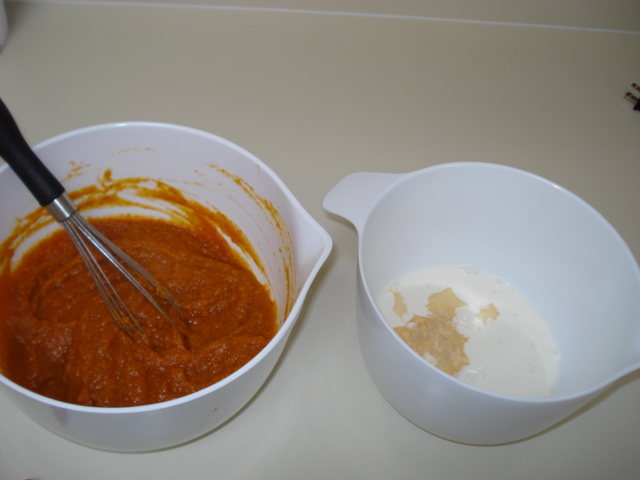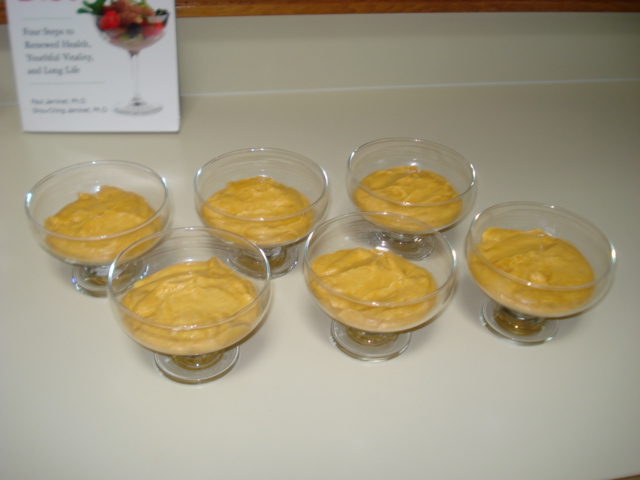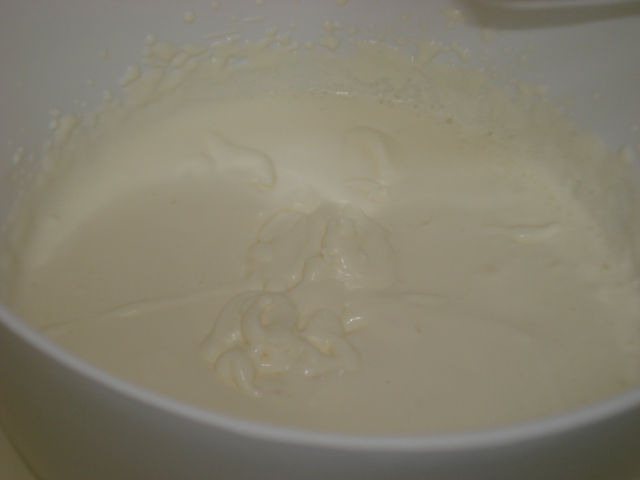As I said yesterday, Chris Masterjohn’s review has inspired me to wrap up the year with a look at the big picture. What is the current state of dietary knowledge, and where is it heading? What can we, the blog community, do to help people become healthier?
The State of Dietary Science
For decades it seems the dominant paradigm shaping official dietary recommendations has been the lipid hypothesis, which engendered hostility to dietary fat. But not all fats: in short term animal studies polyunsaturated fats sometimes lowered blood lipids. As a result, industrial seed oils, which are PUFA rich, were encouraged and natural animal and dairy fats, which are rich in saturated fats, were discouraged.
But evidence has piled up that low-carb Paleo diets high in animal foods are beneficial, and that the lipid hypothesis was mistaken about the dietary causes of bad blood lipids. It looks like the old paradigm is finally dying a well-deserved death.
But what would science be without a scapegoat, a witch for burning? Modern science needs villains, and if fat no longer serves another macronutrient will have to fill in. Many in the low-carb Paleo blogosphere took note of this comment by Dr. Walter Willett in the Dec. 20 Los Angeles Times story “A Reversal on Carbs”:
“Fat is not the problem,” says Dr. Walter Willett, chairman of the department of nutrition at the Harvard School of Public Health. “If Americans could eliminate sugary beverages, potatoes, white bread, pasta, white rice and sugary snacks, we would wipe out almost all the problems we have with weight and diabetes and other metabolic diseases.”
Of course this comment lumps safe starches like potatoes and rice with toxic carb sources like sugar and wheat. The scientists continue to overlook the overwhelming important issue of food toxins, and focus on the minor issue of macronutrient toxicity.
I was not quite sure how significant this story was until I remembered that the reason Chris Voigt started his all-potato diet was to protest the US government’s move to ban potatoes from school lunches and the WIC welfare program:
[T]he Institute of Medicine, the health arm of the National Academy of Sciences, recommended that the U.S. Department of Agriculture stop participants of the federal Women, Infants and Children program, known as WIC, from buying potatoes with federal dollars. The institute also called for the USDA-backed school lunch program to limit use of potatoes.
Under an interim rule, the USDA agreed to bar WIC participants from buying potatoes with their federal dollars. Potatoes are the only vegetable not allowed. Next year, the agency will roll out a final rule …
From a scientific perspective it’s puzzling that potatoes, one of the healthiest starch sources, would be singled out. I think this is yet more evidence that IoM and USDA dietary guidelines serve political rather than health goals, and that the strongest lobbying come from within the government itself. Potatoes are an important US crop, but they do not receive government subsidies. The major subsidized crops, wheat, corn, and soybeans, always seem to be the most highly recommended foods in IoM and USDA analyses. News reports suggest that a reason for the potato ban is the desire to get kids eating more whole grains.
Many Paleo bloggers took the new criticism of carbs as a positive sign. I’m not so sure it represents progress.
Prediction for 2011: Politics, not science, will continue to determine official dietary guidelines.
Popular Paleo Diet Books
If Dr. Willett is serious about eliminating starches and sugars, then his recommended diet will presumably look like the Cordain – Eades – Sisson – Wolf – de Vany low-carb Paleo diet: the recommended plant foods must be fruits and vegetables.
I think this illustrates the power that popular diet books have over scientists and doctors. Paleo diet books have been out for over 10 years now, and millions of people have experienced improved health on these diets. Powerful scientists are starting to surrender to this evidence. Peer review cliques can restrain the progress of science, but not so thoroughly that scientists trail more than a decade behind the general public!
This year saw Robb Wolf and Art de Vany come out with their Paleo books. I collected some diet books for Christmas, and have been perusing them. I am afraid I don’t see much progress from the books of Cordain and Eades a decade ago.
Robb Wolf’s book devotes 32 pages to a “Thirty-Day Meal Plan.” There isn’t a safe starch in the whole month!
I have a few objections:
These Diets Aren’t Paleo Diets: They are really hybrid diets pairing the animal foods of a savannah hunter with the plant foods of chimpanzees and mountain gorillas. But for at least 3 million years ancestral humans have flourished mainly in open woodland habitats near rivers, lakes, and seashores. The available plant foods were mainly the pith and underground storage organs of starch-containing plants. Archaeological evidence confirms that starches have been, with animal foods, the primary calorie sources of ancestral humans for millions of years.
These Diets Aren’t Tasty. Menus like “tuna and cabbage salad,” “chicken apple hash,” “turkey over spinach,” “pork and roasted veggie salad,” “slow-cooked rosemary veggies and meat,” “flank steak, bacon and greens,” “lamb sausage with artichokes,” “chicken and cauliflower,” “tip steak and steamed vegetables,” and “rotisserie chicken, steamed broccoli, side salad” (all taken from Robb’s meal plan) – in short, “lean meat with vegetables” – have never excited me. Such meals assist weight loss, I’m sure, but for most people such an overly restrictive diet unnecessarily removes some of the savor from life.
These Aren’t the Optimal Diets for Human Health: This is the really important issue. Now I am a fan of all of these writers: their diets are big improvements over the Standard American Diet, and they have improved the lives of millions. But their diets are not optimal for longevity or immune defense due to excessive protein and, in some cases, insufficient glucose.
Fortunately it appears that popular Paleo diets may soon evolve to include more starches. In October 2010 Mark Sisson, a bellwether, gave a partial endorsement to the potato:
Potatoes should be limited, or even outright eliminated, for this (large) subset of the population. For the lean and active, however, I don’t think a few red potatoes with dinner are anything to worry about.
A few potatoes – if they are red, and if you are an athlete. Grudging, perhaps, but a big step forward. Since the Harvard Department of Nutrition follows Mark Sisson after 10 years, we can expect potatoes to get off the government’s proscribed list by 2020.
Prediction for 2011: Paleo will become ever more popular. But it will flourish even more if “safe starches” are recognized as genuinely Paleo foods, and lean meats and protein are de-emphasized.
Food Toxins: Weston A Price Lives!
In his review, Chris called our discussion of food toxins “incredibly important.” As he points out, this very important but very complex topic could easily warrant a book (or several) in its own right:
I believe a more complete discussion of food toxicity would include the methods that humans have developed to detoxify these foods, variation in susceptibility to food toxins, the role of nutrition in preventing food intolerances, and a number of other food toxins that occur in foods …
I agree.
In framing the subject of nutrition and food toxicity, I think our “economic” analysis makes an important contribution. In this analysis, increasing doses of a nutrient provide first declining marginal benefits, then inconsequential effects throughout a “plateau range,” and finally increasing marginal toxicity.
A slight complexity is that some nutrients are complements for one another, so that (for instance) omega-6 and omega-3 fats or vitamins A and D need to be in balance.
I found that this method of analysis makes sense out of the many seeming paradoxes and contradictions in the literature. A nutrient can be “good” or “bad” depending on whether it is present in deficiency or in excess in the diet.
If this approach is correct, then the key to health is providing adequate amounts of nutrients and avoiding toxins. This way of thinking would require a big conceptual change on the part of many dietary scientists. The concepts of nutritional context and food toxicity would become unifying concepts in nutrition.
This way of thinking holds the potential to integrate distinct strands of dietary thought. An important line of dietary research studies traditional diets and their methods of food preparation. Weston A. Price and the Weston A. Price Foundation are exemplars of this approach. Stephan Guyenet of WholeHealthSource is a blogger who writes with great respect for traditional diets.
The congruence of Stephan’s approach to diet and ours is apparent in the fact that he is the most cited blogger in our book – mentioned 23 times.
Traditional cultures tended to eat a diversity of “safe” (i.e. low-toxicity) starches, and also had elaborate food preparation methods that tended to de-toxify foods. Soaking, sprouting, fermenting, and long cooking can often make toxic foods into safe foods, as Chris notes in his review.
Traditional cultures probably ate more authentic “Paleo” diets than the popular Paleo diets! The diet of Kitava, for instance, has probably changed little in the last 40,000 years. We know that early “Out of Africa” settlers to that area around 45,000 BC were already clearing forests in order to plant yams; and were notable boaters and fishermen. Fish, coconuts, and yams remain the staples of the Kitavan diet.
There is no reason why the Paleo and traditional food communities should not reach a mutually pleasing synthesis:
- The Paleo community should accept low-toxicity starchy plants as a healthy part of the human diet; recognize that Paleo cultures were willing to eat any food that was nourishing and low in toxins; and recognize traditional food preparation methods as genuine Paleolithic technologies for food de-toxification that enabled a broadening of the diet.
- The traditional foods community should recognize that Neolithic foods like wheat are among the most toxic foods, and that in practical life it is not always feasible to detoxify highly toxic foods, so that it a “Paleo” style diet will most often be most healthful for most people.
One of the most exciting aspects of the current blogosphere is the emergence of bloggers who link these two communities and scientists. Stephan and Chris are two scientist-bloggers who are helping to synthesize the best threads in contemporary dietary thought.
Prediction for 2011: The dichotomy between low-carbers and traditional dieters will continue to narrow. More people will happily identify themselves as Paleo dieters and fans of traditional food cultures. In particular, increasing numbers of young scientists and doctors will be in our corner.
Integrating Medicine and Diet
The part of our book which may attract the least attention in the short run, but which we hope will have the most long-term impact, is Step Four. This part of the book stresses pathogens as the cause of most diseases, and diet as the essential therapy for chronic infectious diseases.
In his review, Chris states:
Rather than considering sanitation, hygiene, or vaccines to be the most important tools in the fight against infectious disease, the Jaminets provide a refreshing integration of the fields of immunology and nutrition. They discuss eleven dietary and lifestyle strategies one can enlist in this fight …
We’ll be discussing additional ways to strengthen immunity and heal disease in the New Year. Using diet to modulate immunity is really one of the most overlooked pathways to good health, and we have only begun to scratch the surface here.
Most doctors are unaware of the prevalence of chronic infections. New chronic pathogens are rapidly being discovered and linked to diseases. Just this year, a new human gamma retrovirus was linked to chronic fatigue, and several viruses were linked to cancers. Evidence continues to grow linking both viral and bacterial infections to neurological disorders.
Doctors are even less aware of the powerful influence of diet and dietary practices like fasting upon immune function. Patients have the ability to modulate their diet to optimize immune function and direct it specifically against the type of pathogen – intracellular or extracellular – that causes their disease.
In a recent comment, gunthergatherer introduced me to an e-book by Ron Mignery suggesting alternate-day protein elimination (a “protein cycling diet”) as an autophagy-promoting practice that should help prevent neurological disorders. This is a variation of our protein restriction, fasting, and ketogenic dieting techniques, all of which are designed to promote autophagy. Autophagy is the key intracellular immune mechanism that protects against bacterial and viral infections.
It is good to see that other people are developing the same ideas we are. Hopefully these ideas can spread beyond a few scientist-dieters into general practice.
Prediction for 2011: Evidence will continue to pile up linking bacteria, viruses, protozoa, and fungi to chronic disease. New pathogens will be discovered to cause disease in humans. But diet and nutrition will continue to be overlooked as potential therapeutic steps. Meanwhile, bacterial resistance to antibiotics will continue to outpace the development of new antibiotics. Concern by doctors, scientists, and patients will continue to largely go unheeded by the FDA and funding agencies.
Conclusion
It’s been an exciting year for us: we published our book and began this blog. In the new year, we hope to delve more deeply into the issues discussed in the book, and explore more thoroughly how dietary and nutritional practices can help heal disease. We are excited to see if our ideas will be as beneficial for others as they have been for us.
Of course, if we didn’t have a delightful community of readers, commenters, and fellow bloggers, this would neither be fun nor productive. Therefore, we thank you all very much, and wish you a very happy and healthy new year!

















Recent Comments